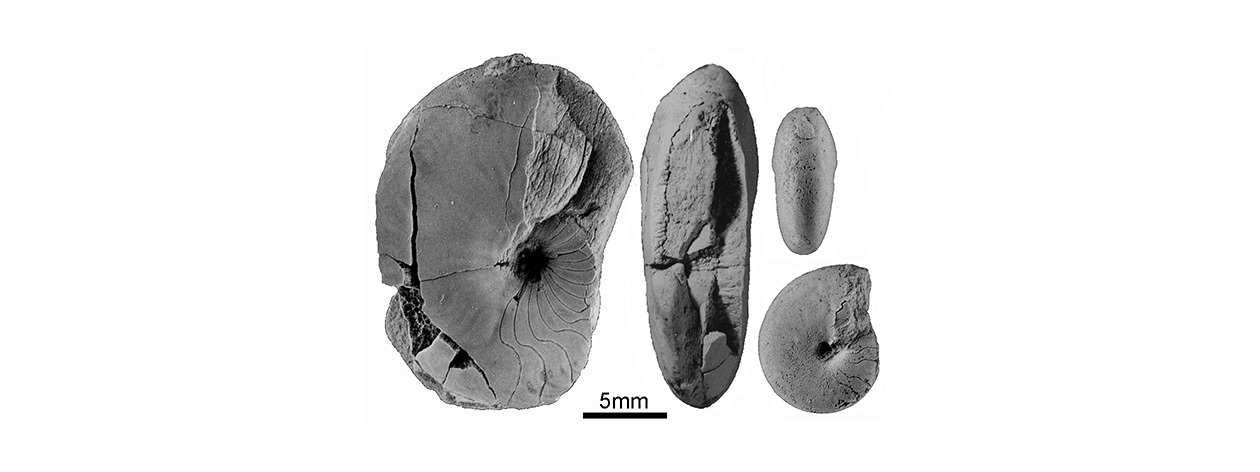Diagnoza
Narrow umbilicus with the flat adjoining wall of the conch giving it a conical appearance, prominent rounded auricles of the aperture. Porównanie
The holotype suture is similar to that in juvenile specimens from Kowala. Adult suture (in specimens up to 34 mm in diameter) is more tornoceratid, but it is highly variable. The sample is evidently homogenous, being taken from a single black clay intercalation in the stratigraphically uncondensed, thick rock sequence. An angulation at the dorsal slope of the flank lobe makes some of the Kowala specimens similar to the holotype of Polonoceras latum Dybczyński, 1913, which may appear conspecific. Other specimens show a dorsally located indentation in the lobe, having its oblique ventral slope almost straight. This indentation corresponds to a small vaulted area of the septum, a situation closely similar to that in the open-umbilicate Protornoceras siemiradzkii Dybczyński, 1913. However, these are distinct species different in the diameter of umbo, the trait less variable than the course of suture in the Kowala material. Tornoceras obliquum Perna, 1914 from the Prolobites horizon of the Urals shows a similar conch form and suture but unsimilar, pointed auricles of the aperture. Autekologia Występowanie geograficzne
Kowala; reworked at Sieklucki’s brickpit in Kielce. Zasięg czasowy
Mid C. marginifera Zone Materiały muzealne
ZPAL: 14 specimens. Literatura
Dzik, J. 2006. The Famennian "Golden Age" of conodonts and ammonoids in the Polish part of the Variscan sea. Palaeontologia Polonica 63, 1-359. | 

